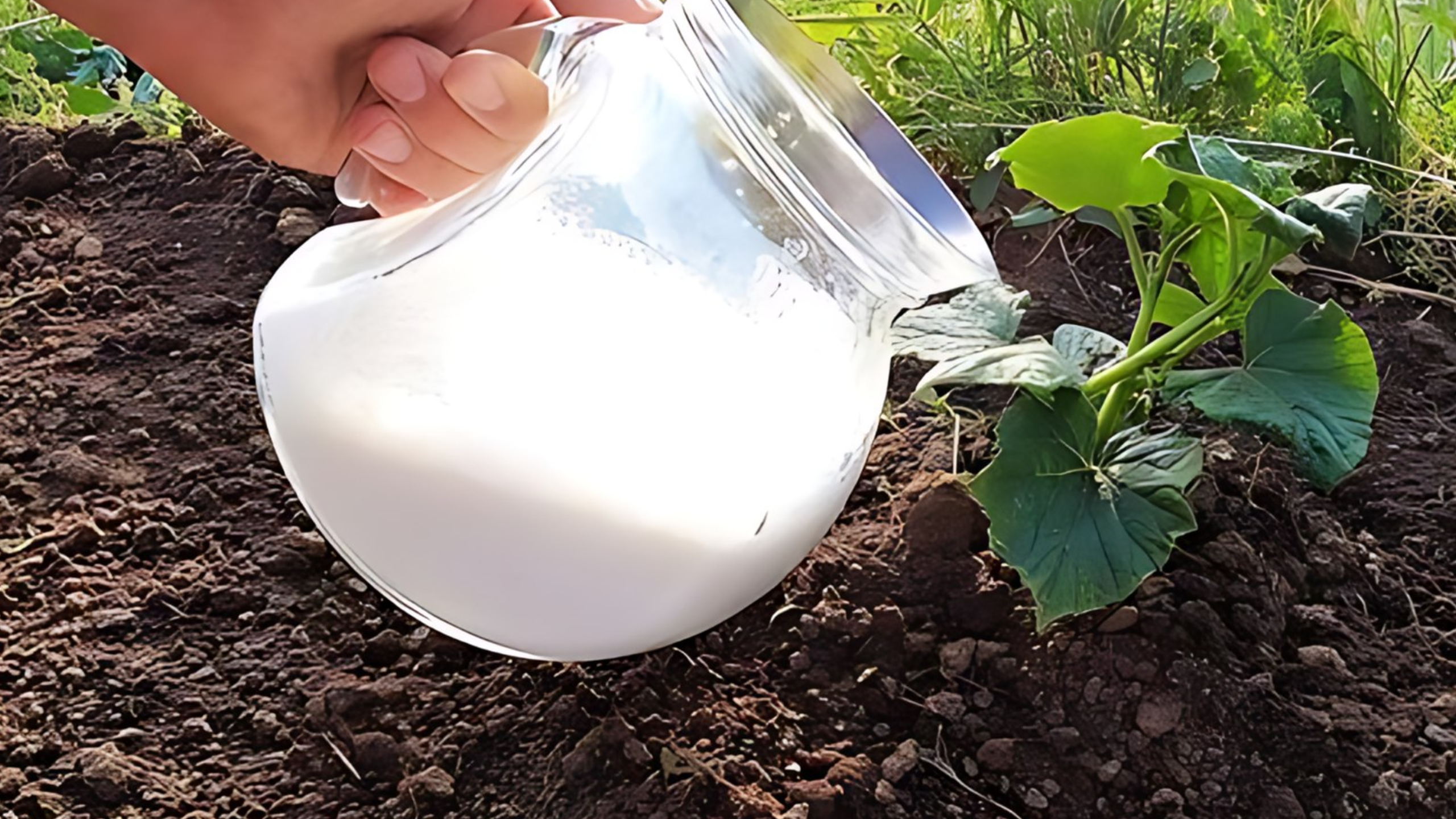Are your cucumber plants growing slowly or not producing as many zucchinis as you’d like? You might be surprised to learn that a simple homemade liquid fertilizer can work wonders—making your cucumbers grow faster, healthier, and more vigorously than ever before.
Recently, gardeners have reported astonishing results after applying a special homemade liquid fertilizer to their cucumbers. In fact, plants have started to “go crazy,” growing leaves and fruits at incredible speeds. Curious? Here’s a step-by-step guide to creating and using this powerful, natural fertilizer.
Step 1: Gather Your Ingredients
First, you’ll need some basic ingredients you probably already have at home:
- 1 cup of whole milk (full-fat works best, as the fats and nutrients are more beneficial)
- 1 tablespoon of baker’s yeast (the same yeast used in baking bread)
- 1 gallon of water
Why these ingredients?
The milk provides nutrients like calcium, proteins, and sugars which stimulate plant growth. The yeast acts as a natural activator that boosts microbial activity in the soil, encouraging healthier root development. Water is, of course, essential for delivery and dispersal.
Step 2: Prepare the Fertilizer

Now, let’s make the magic happen! Follow these steps:
- Mix the milk and yeast in a large container. Stir well until the yeast dissolves completely. This creates a nutrient-rich base full of beneficial microbes.
- Add the water gradually, stirring constantly to ensure everything combines smoothly. It’s best to use a clean, large container to prevent contamination.
- Let it sit at room temperature for several hours—ideally 4 to 6 hours—to activate the yeast. During this time, the mixture will bubble and ferment slightly, indicating that the microbial activity is underway. This fermentation process is crucial because it enhances the nutrients’ availability to your plants.
Tip: For best results, cover the container with a breathable cloth to prevent insects from getting in while allowing air to circulate.
Step 3: Applying the Fertilizer
Before using the fertilizer, you’ll want to dilute it a bit:
- Mix 1 part of the fermented liquid with 5 parts of water. This prevents over-fertilizing, which can damage plants.
- Use a watering can to gently pour the diluted mixture at the base of your cucumber plants. Be sure to avoid watering the leaves directly, as this can promote fungal diseases.
Frequency:
Apply this liquid fertilizer once a week. Consistent weekly feeding provides your cucumbers with a steady supply of nutrients that encourages rapid growth and fruiting.
Step 4: Monitoring and Maintenance
Within just a few weeks, you should start seeing noticeable improvements:
- Rapid growth: Leaves become lush and vibrant.
- Increased vigor: Plants look healthier overall, with robust stems.
- Higher yields: You’ll notice more cucumbers forming and maturing faster.
However, stay vigilant: keep an eye out for pests, such as aphids or beetles, and diseases like powdery mildew. If necessary, use organic pest control methods to keep your plants healthy.
It’s also important to watch for signs of overfeeding, such as excessively rapid growth that makes plants more susceptible to diseases. Adjust the fertilization schedule accordingly—if growth seems too leggy or plants appear stressed, reduce the frequency or concentration.
Step 5: Harvest Your Cucumbers
In just a few weeks, your cucumbers will be ready to harvest. The ideal size is between 15 to 20 centimeters (6 to 8 inches)—not too small and not oversized. Regular harvesting encourages plants to produce more fruit, so keep an eye on your garden and gather the cucumbers promptly.
Enjoy your fresh, homegrown cucumbers in salads, sandwiches, or as a crunchy snack. The best part is knowing you’ve boosted their growth with a simple, natural fertilizer that’s easy to make.
Why Does This Works?
You might wonder: Why does this homemade mixture stimulate such vigorous growth?
The combination of milk and yeast creates a microbial-rich environment. These beneficial microbes improve soil health, enhance nutrient absorption, and promote overall plant vitality. The milk supplies essential nutrients, while the fermentation process unlocks their full potential, giving your cucumbers a boost like no commercial fertilizer can match.
Final Thoughts
This natural fertilizer is an excellent, cost-effective way to enhance your garden’s productivity. Best of all, it’s safe for your plants, your family, and the environment.
With just a few simple ingredients and a little patience, you’ll transform your cucumber plants from slow growers to prolific producers. Happy gardening! If you have any questions or want to share your results, feel free to reach out—I’d love to hear about your cucumber adventures!


785266 540542Spot lets start on this write-up, I seriously believe this wonderful website requirements a lot a lot more consideration. Ill a lot more likely once once again to read a fantastic deal more, a lot of thanks that info. 947145